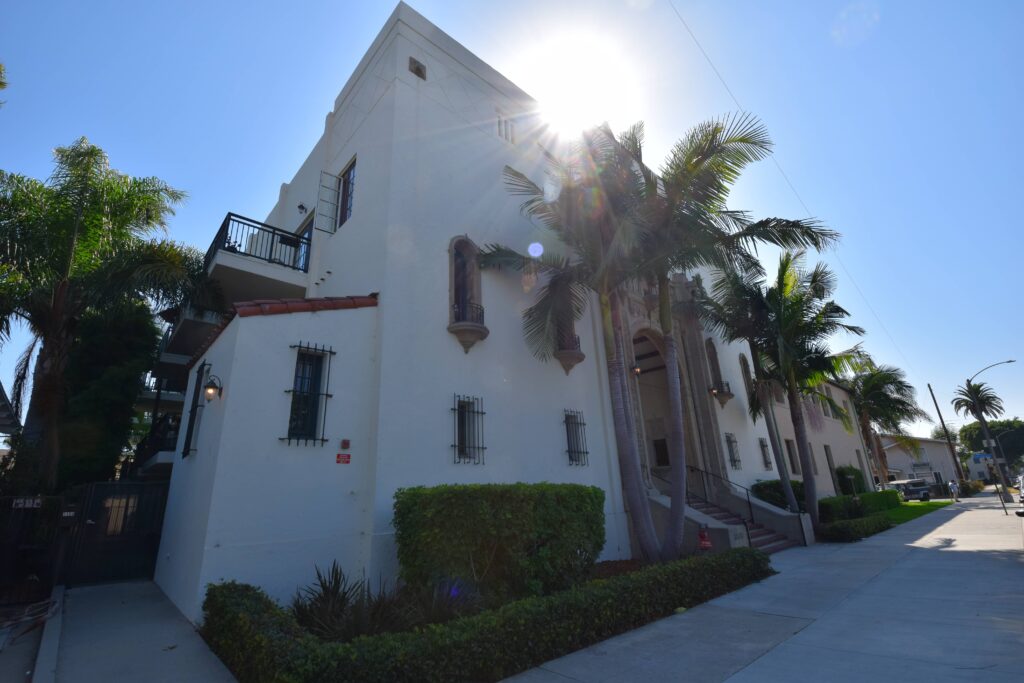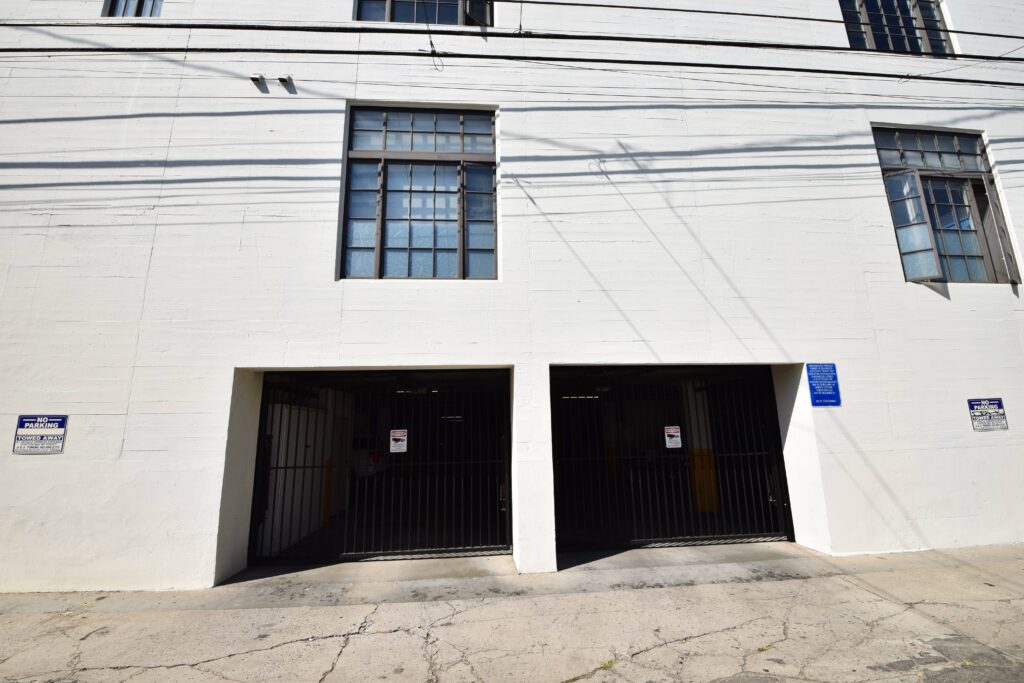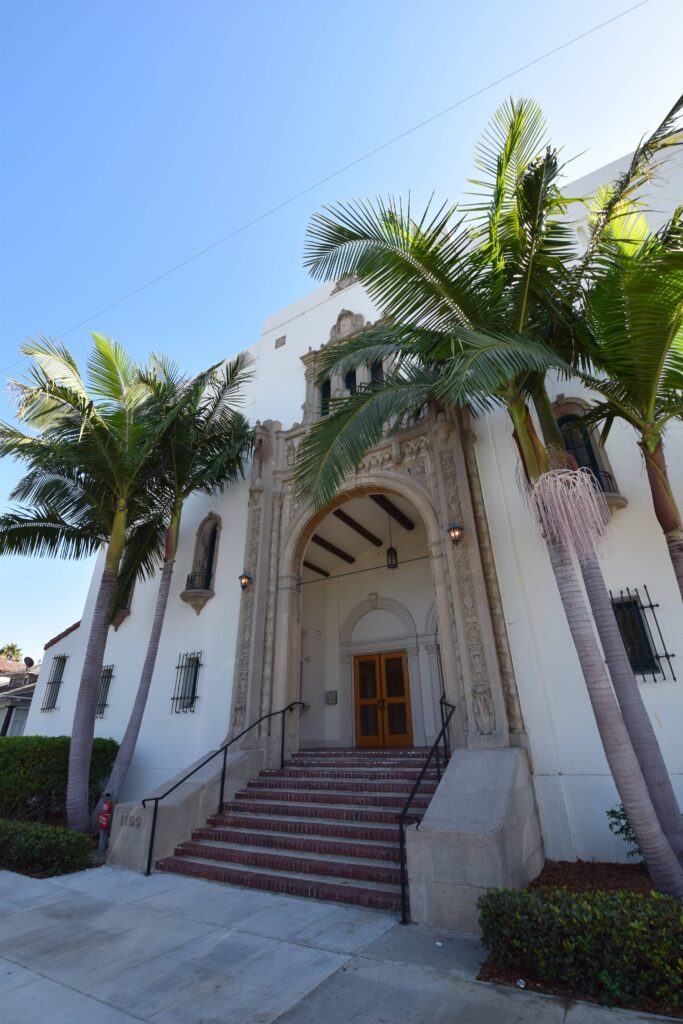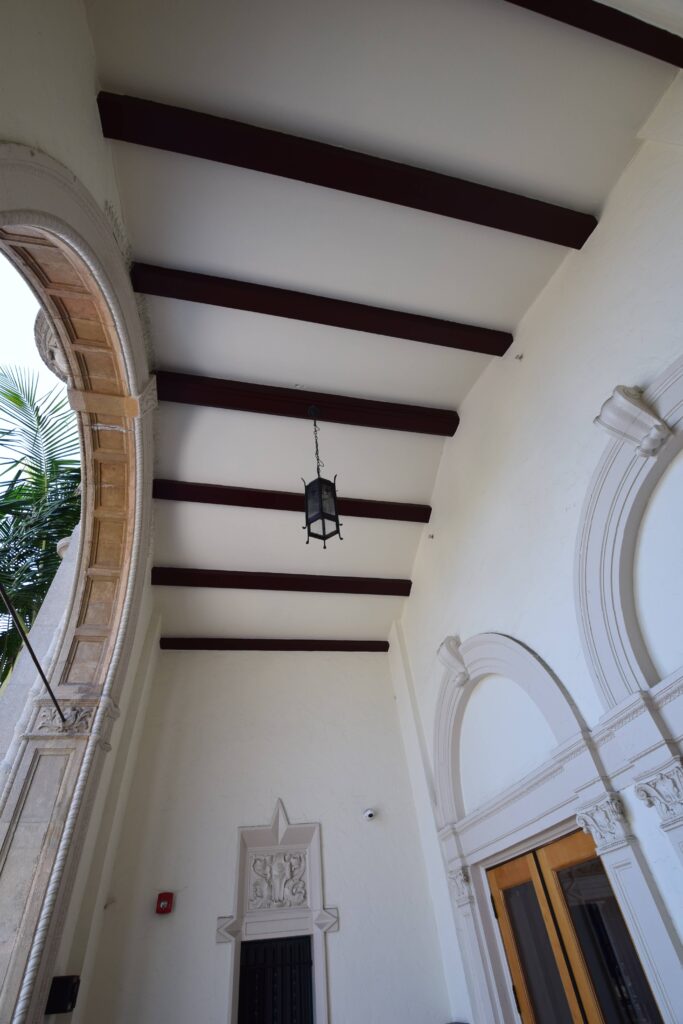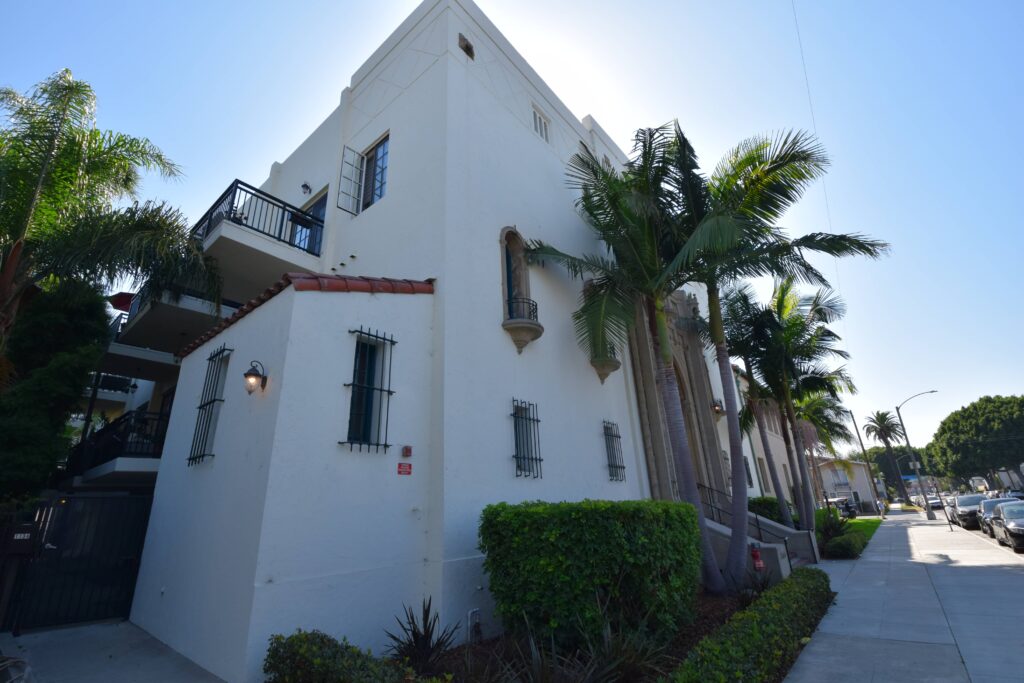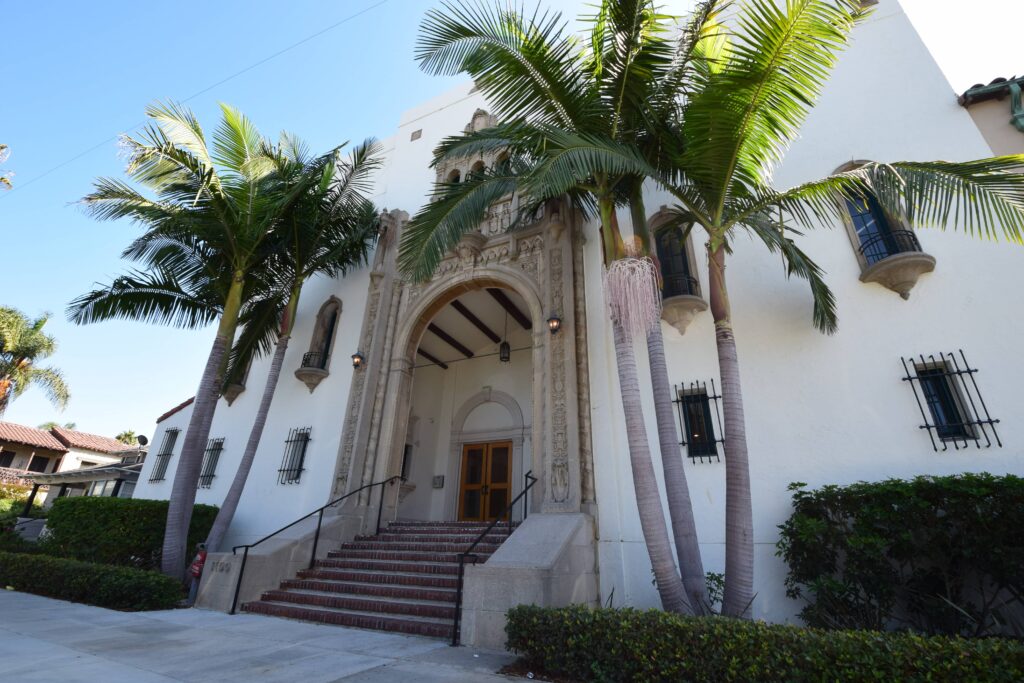
Address: 1100 E 3rd St, Long Beach, CA 90802
HOA: Ebell Theater
Year Built: 1924
Units: 11
Parking: Secured Parking
Table of Contents
- All About the Ebell Theater
- The Architect of the Ebell Theater
- Common Questions
- Architectural Style: Spanish Colonial Revival
- Historic Designation
- Dining Options
- Interested in Buying or Selling?
All About the Ebell Theater Lofts
One of the exciting aspects about lofts in Long Beach is that the majority of them are adaptive reuse projects, which means that along with a great loft you also get to enjoy a beautiful building that has a rich history. A loft project that has a rich history, along with stunning lofts, is that of the Ebell Theater. The Ebell Theater was originally built in 1924 and was part of the Ebell Women’s Club.
The Ebell Women’s Club was a prominent organization dedicated to the cultural and educational advancement of women during the early 20th century. The theater served as a venue for various performances, lectures, and social gatherings, becoming a cultural hub in Long Beach. It was truly a center for social gatherings as it had well over 1,000 members in the 1920’s. The 1933 Long Beach earthquake demolished much of the building; however, the club was undeterred, rebuilt and it even became a Red Cross Headquarters during World War II.
Over the years the membership to the Ebell Women’s Club declined and the Ebell Theater needed a new life. In 2005 a new vision came to life that really became two distinct aspects within one larger structure. This engaging location is now known as The Ebell of Long Beach, which is a 17,200 sq ft venue that can host a variety of events from weddings and more and The Ebell Theater Lofts which is a distinct 11 unit loft development.
The lofts at the Ebell Theater are each unique and range in size from 1,200 sq ft to 2,200 sq ft. When you walk into one of these units you will get to experience warm light that comes in through large windows that is further enhanced by ceiling heights that can be up to 18’. As you might expect with a building that has this rich history the lofts were designed in true “loft fashion” meaning you will find polished concrete floors, expertly exposed ductwork work, and surface mounted conduit for your electrical needs. The modern loft owner was certainly taken into consideration as the developers made sure to provide for stackable washer/dryer units, heating and central air conditioning, and two side-by-side parking spaces with storage.Should you be able to purchase the penthouse unit you will even have the ability to enjoy a spiral staircase that leads to a second floor where you get the benefit of an additional room with a half-bath. Depending on the loft you are evaluating at the Ebell Theater you could even enjoy a view to the west where you could gaze upon the Pacific and the Villa Riviera.
The Architect of the Ebell Theater, C.T. McGrew
C.T. McGrew was a prominent architect in Southern California during the early 20th century, known for his versatile design portfolio that spanned both residential and commercial projects. While not as widely recognized as some of his contemporaries, McGrew’s contributions to the architectural landscape of Los Angeles and its surrounding areas are significant.
Born in the late 19th century, McGrew grew up during a time of rapid urbanization and architectural innovation in the United States. This period saw the rise of new architectural styles, such as the Arts and Crafts movement, Mission Revival, and later, Art Deco, which heavily influenced McGrew’s work.
McGrew’s architectural career began in the early 1900s, a time when Los Angeles was transforming from a small town into a sprawling metropolis. His early work primarily involved residential projects, where he quickly gained a reputation for his attention to detail and ability to blend traditional architectural elements with modern design concepts. This ability to harmonize the old with the new would become a hallmark of his career.
One of McGrew’s most notable projects was the Ebell Theater of Long Beach, which he co-designed with fellow architect Clark Philip. The Ebell Theater, completed in 1924, is a prime example of McGrew’s ability to integrate different architectural styles. The building features elements of the Spanish Colonial Revival style, which was popular in California at the time, as well as touches of the emerging Art Deco style, which would come to dominate the architectural landscape in the following decade.
Common Questions
1. What Year Was the Ebell Theater Built?
The Ebell Theater, located at 1100 E 3rd St, Long Beach, CA, was originally constructed in 1924. This historic building was part of the Ebell Women’s Club, a prominent organization dedicated to the cultural and educational advancement of women during the early 20th century. The theater served as a venue for various performances, lectures, and social gatherings, becoming a cultural hub in Long Beach. The building’s rich history is reflected in its classic architectural details, which have been preserved and integrated into the current lofts, offering residents a unique blend of historical charm and modern living.
2. When Was the Ebell Theater Converted to Lofts?
The Ebell Theater was converted into lofts in 2005 as part of an adaptive reuse project aimed at revitalizing the historic building while preserving its architectural integrity. The transformation from a theater to residential lofts was carefully managed to retain many of the building’s original features, such as the grand entryways, high ceilings, and distinctive architectural details. This conversion allowed for the creation of unique living spaces that offer a blend of historical character and contemporary amenities, appealing to those who appreciate the history and culture of Long Beach.
3. How Many Lofts Are in 1100 E 3rd St?
The Ebell Theater Lofts at 1100 E 3rd St consist of 11 unique residential units. Each unit has been thoughtfully designed to maximize space and light, with open floor plans that highlight the building’s original architectural features. The limited number of units ensures a sense of exclusivity and privacy, making the Ebell Theater Lofts a sought-after address in Long Beach.
4. What’s Included in the HOA?
The Homeowners Association (HOA) covers several essential services and amenities to ensure a comfortable living experience. These typically include water, trash, and common area maintenance, which encompasses the upkeep of the building’s historic features and shared spaces. The HOA also funds building insurance, ensuring that the historic structure is protected. Additionally, the association often manages exterior maintenance, including landscaping and any necessary repairs to the building’s exterior. These inclusions provide residents with peace of mind, knowing that the upkeep of their historic home is well-managed.
5. Are Pets Allowed?
Yes, pets are allowed at the Ebell Theater Lofts, making it an ideal home for pet owners who want to enjoy urban living without sacrificing their furry companions. The building’s pet-friendly policy reflects the growing demand for accommodations that cater to the needs of modern residents. If you are a dog owner and looking to walk your dog your closest parks in the direction of the Ocean would be Bixby Park and Bluff Park. Each HOA can have limitations (usually based on their insurance policy) regarding pets which means it is important to go through your HOA documents in detail when you are in escrow to purchase one of these lofts.
6. What Kind of Parking Is Available at 1100 E 3rd St?
The building offers secure, gated parking, typically in a dedicated parking lot or garage adjacent to the building. Each unit may have assigned parking spaces, providing convenience and peace of mind for residents who own vehicles. The secure parking facility ensures that residents’ vehicles are protected, adding an extra layer of security to the living experience at 1100 E 3rd St. Additionally, the location’s proximity to public transportation options means that residents can easily navigate the city without always relying on a car.
7. Why is the Property Called the Ebell Theater?
The property at 1100 E 3rd St is called the Ebell Theater because it was originally built as part of the Ebell Women’s Club, a prominent cultural and social institution in Long Beach. The Ebell Theater was a venue for performances, lectures, and other events hosted by the club. The name “Ebell” is derived from Dr. Adrian Ebell, who inspired the founding of the first Ebell Club in Los Angeles, which aimed to promote the cultural and educational development of women. The Long Beach Ebell Club followed this tradition, and the theater became a key part of the community’s cultural life. The building retains the name to honor its historical significance.
8. Who is the Original Architect of the Ebell Theater?
The original architect of the Ebell Theater was C.T. McGrew. While he is generally referenced first as the architect it is well known that he designed the Ebell Theater in conjunction with Clark Philip.
9. Who is the Architect of the Adaptive Reuse Project of the Ebell Theater?
The adaptive reuse project of the Ebell Theater was led by the architectural firm Interstices, under the direction of Jonathan Glasgow. Known for their expertise in adaptive reuse and historic preservation, Interstices approached the project with a deep respect for the building’s historical significance. The goal was to convert the theater into modern lofts while retaining as much of the original architectural integrity as possible. This included preserving key features such as the high ceilings, exposed brick walls, and large windows that define the building’s character. The firm’s work on the Ebell Theater Lofts is a testament to their ability to blend history with modernity, creating unique living spaces that honor the past while providing contemporary comforts.
10. Who was the developer of the Ebell Theater Lofts and Event space?
The developer of the Ebell Theater was Jan Van Dijs. This firm is known for an array of projects, mainly in Long Beach and their attention to preservation and details in their projects made the Ebell Theater project a perfect fit.
11. What Is the Architectural Style?
The Ebell Theater is a prime example of the Mission Revival architectural style, a popular style in California during the late 19th and early 20th centuries. Mission Revival architecture is characterized by its use of stucco walls, red tile roofs, and arches, all of which were inspired by the early Spanish missions in California. This style aimed to evoke the romanticized history of the state and became a dominant architectural trend in Southern California.
In the case of the Ebell Theater, the Mission Revival style is evident in its simple, yet elegant design. The building features smooth stucco walls, arched windows and doorways, and a red tile roof, all typical elements of the style. The interior spaces were originally designed to be both functional and aesthetically pleasing, with high ceilings, spacious rooms, and detailed woodwork. The adaptive reuse of the theater into lofts preserved many of these features, allowing residents to enjoy the historical charm of the Mission Revival style while living in a modern, urban environment. This blend of old and new is a hallmark of successful adaptive reuse projects.
12. Do All Units Have Balconies?
Not all units at the Ebell Theater Lofts have balconies. However, those that do offer a unique outdoor space where residents can enjoy views of the surrounding area and experience the vibrant urban environment of downtown Long Beach. The availability of balconies varies depending on the specific layout and location of the unit within the building. Units without balconies often compensate with large windows and high ceilings, providing an open, airy feel that connects the indoor space with the exterior. The lofts are designed to maximize natural light and create a sense of spaciousness, whether or not they include a balcony.
13. What Kind of Heating System Is Used in Each Unit?
The units at the Ebell Theater Lofts are typically equipped with central heating systems. The historic nature of the building may mean that some units have unique heating solutions that blend with the original architecture, such as exposed ductwork that adds to the industrial-chic aesthetic of the lofts.
14. How Much Is the HOA?
The HOA fees for the Ebell Theater Lofts can vary depending on the specific unit and the amenities provided. Typically, HOA fees at 1100 E 3rd St range from $400 to $620 per month. These fees cover essential services such as water, trash, common area maintenance, building insurance, and exterior upkeep. The HOA is also responsible for maintaining the historic integrity
15. Is the Ebell Theater an event location?
The Ebell Theater comprises the lofts as well as “The Ebell of Long Beach”. The Ebell of Long Beach is the event location which is 17,200 sq ft of event space that has a 180 person capacity for sit down reception. This gorgeous location embraces the stunning details from the early 1920’s that has been modernized with a professional sound system, wireless internet and a baby grand piano to enjoy history and your event simultaneously
Architectural Style: Spanish Colonial Revival
The Ebell Theatre is primarily designed in the Spanish Colonial Revival style, a popular architectural movement in California during the early 20th century. This style drew inspiration from the Spanish colonial heritage of the region, emphasizing elements such as stucco walls, red tile roofs, and elaborate ornamentation.
Key Features of Spanish Colonial Revival
An architectural style can have many interpretations as an architect applies the fundamentals to a given structure. In the case of the Ebell Theater of Long Beach we invite you to consider how the following key features of the Spanish Colonial Revival style were applied:
- Stucco Walls: The exterior of the Ebell Theatre is characterized by smooth stucco walls, which were commonly used in Spanish Colonial Revival architecture for their durability and aesthetic appeal. The stucco finish provides a clean, elegant look that complements the building’s other decorative elements.
- Red Tile Roof: The theatre features a distinctive red tile roof, another hallmark of the Spanish Colonial Revival style. These tiles not only add to the visual appeal of the building but also offer practical benefits, such as improved insulation and resistance to fire.
- Ornamentation: One of the defining aspects of Spanish Colonial Revival architecture is its intricate ornamentation. The Ebell Theatre showcases this through its decorative ironwork, arched doorways, and intricately carved wooden details. These elements add a layer of richness and sophistication to the building’s overall design.
- Arched Openings: The use of arches is prevalent in the Ebell Theatre’s design. Arched windows and doorways are not only structurally sound but also evoke a sense of grandeur and tradition. This feature is rooted in Spanish and Moorish architectural influences, which often incorporated arches into their designs.
- Courtyard and Gardens: Spanish Colonial Revival buildings frequently include courtyards and gardens, creating a harmonious blend of indoor and outdoor spaces. While the Ebell Theatre primarily functions as an indoor venue, its design pays homage to this tradition through its landscaping and outdoor aesthetic elements.
Influence of Other Architectural Styles
While the primary style of the Ebell Theatre is Spanish Colonial Revival, there are subtle influences from other architectural styles as well. Elements of Mission Revival, which preceded the Spanish Colonial Revival movement, can be seen in the building’s simple, yet elegant lines and its emphasis on functionality. Additionally, the theatre’s interior may feature aspects of the Art Deco style, which was gaining popularity during the same period. This blend of styles reflects the eclectic architectural trends of the early 20th century and adds to the building’s unique character.
Historic Designation
The City of Long Beach recognizes over 100 landmarks throughout the city. One objective of identifying landmarks as historic via municipal code is to protect the architectural value that these properties offer to the community. Many of the details that these properties embrace simply could not be done today to the expensive nature and ever restrictive building codes. The Ebell Theater Lofts are listed as a historic landmark under two addresses, the Ebell Club (290 Cerritos Avenue) and the Ebell Theater (1100 E. 3rd St).
Dining Options
When you are looking for a new place to call home it isn’t just about the residence, it is about what is nearby. When you call the Ebell Theater Lofts home you are close to many great dining locations such as the following:
The Social List
Address: 2105 E. 4th Street, Long Beach CA, 90814
When you want to enjoy a casual restaurant that has a true community feel the Social List is a great place to dine. They specialize in small shared plates and entrees. Happy Hour here, which is 3-6pm on Weekdays, includes a great selection of eating options from spicy hummus, baked macaroni & cheese and much more. In addition to the great food options you have the opportunity to partake in drink options from the beer of the day to their well known Old Fashioned and Mule on Tap.
Ellie’s
Address: 204 Orange Ave., Long Beach, CA 90802
Ellie’s occupies a wonderful location at the corner of 2nd and Orange avenue. This quaint restaurant serves southern Italian cuisine. Whether you want to enjoy a dish made from their handmade pasta such as their gnocchi lunghi or their lasagna you won’t be disappointed. To go along with their fine dishes they have a selection of wines from Italy, Spain, France, and more.
Alder & Sage
Address: 366 Cherry Avenue, Long Beach, CA 90814
In nearby Bluff Heights you can have the opportunity to enjoy Alder & Sage which specializes in coffee, breakfast, lunch and drinks. This gorgeous setting features an outdoor fire pit area which is the perfect place to enjoy any one of their menu items from their seasonal fruit plate or the mojo pork hash. This California Bistro is known for organic, locally sourced ingredients where their menu is curated to change with the seasons. Even if you don’t end up calling the Ebell Theater lofts home you will want to have this place on your list to enjoy.
Interested in Buying a Loft or Selling Your Loft at the Ebell Theater?
When you are interested in selling your Ebell Theater Loft (or buying) there are many items to consider. Regardless of whether you are selling or buying it is about understanding market conditions, the individual loft at the Ebell Theater, upgrades/conditions, your goals, and even more. Ebell Theater Lofts occupy a unique part in the landscape of Long Beach Lofts and getting the most from a sale or the best price on a purchase is about having the right real estate agent/broker to help you. When you would like guidance, whether you are buying or selling please fill out our Long Beach Hot List and we will be happy to help.
